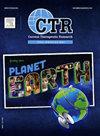US Real-World Effectiveness Study of Nirmatrelvir/Ritonavir in Preventing Hospitalization of High-Risk COVID-19 Patients
IF 1.5
Q3 MEDICINE, RESEARCH & EXPERIMENTAL
Current Therapeutic Research-clinical and Experimental
Pub Date : 2024-01-01
DOI:10.1016/j.curtheres.2024.100757
引用次数: 0
Abstract
Purpose
We describe nirmatrelvir/ritonavir (NMV/r) effectiveness in preventing hospitalization among COVID-19 patients at high risk of severe disease.
Methods
An ongoing US population-based observational cohort study with retrospective and prospective collection of national electronic healthcare data collected from the US Optum® deidentified COVID-19 Electronic Health Record dataset during December 22, 2021−July 20, 2022. Participants were ≥12 years old; had a positive SARS-CoV-2 test, COVID-19 diagnosis, or NMV/r prescription; and were at high risk of severe COVID-19 based on demographic/clinical characteristics. Potential confounders between groups were balanced using propensity score matching. Immortal time bias was addressed. Hospitalization rates within 30 days from COVID-19 diagnosis were evaluated. Sensitivity analyses included 15-day hospitalization, chart review to investigate incidental hospitalization effects, and exclusion of patients identified as having COVID-19 based on NMV/r prescription alone. Outcomes were also evaluated by race, age, and COVID-19 vaccine status.
Findings
Overall, 12,440 and 234,123 patients were included in the NMV/r and non-NMV/r groups, respectively. After propensity score matching, baseline characteristics were well balanced across groups (NMV/r, n = 12,439; non-NMV/r, n = 36,490). Incidence of hospitalization (95% CI) within 30 days was 0.90% (0.74%−1.08%) for the NMV/r group and 5.91% (5.67%−6.16%) for the non-NMV/r group, with relative risk (95% CI) of 0.15 (0.13−0.18; 85% risk reduction). NMV/r was comparably effective in Black patients (relative risk, 0.19 [0.10−0.34]; 81% risk reduction). Sensitivity analyses supported the main outcomes.
Implications
Real-world NMV/r effectiveness against hospitalization during Omicron predominance among COVID-19 patients at high risk of severe disease supports demonstrated clinical trial efficacy. Black patients underutilized NMV/r despite high effectiveness.
美国尼马瑞韦/利托那韦预防 COVID-19 高危患者住院治疗的实际效果研究
目的 我们描述了尼马瑞韦/利托那韦(NMV/r)在预防COVID-19重症高危患者住院方面的有效性。方法 一项正在进行的基于美国人群的观察性队列研究,该研究采用回顾性和前瞻性方法收集美国Optum®去标识化COVID-19电子健康记录数据集中的全国电子医疗保健数据,时间为2021年12月22日至2022年7月20日。参与者年龄≥12岁;SARS-CoV-2检测、COVID-19诊断或NMV/r处方呈阳性;根据人口统计学/临床特征,属于严重COVID-19高危人群。采用倾向评分匹配法平衡了组间潜在的混杂因素。解决了不朽时间偏差问题。对确诊 COVID-19 后 30 天内的住院率进行了评估。敏感性分析包括 15 天住院率、调查偶然住院影响的病历审查,以及排除仅根据 NMV/r 处方确定为 COVID-19 的患者。研究结果NMV/r组和非NMV/r组分别纳入了12,440名和234,123名患者。经过倾向评分匹配后,各组的基线特征非常均衡(NMV/r,n = 12,439;非 NMV/r,n = 36,490)。30 天内住院的发生率(95% CI),NMV/r 组为 0.90% (0.74%-1.08%),非 NMV/r 组为 5.91% (5.67%-6.16%),相对风险 (95% CI) 为 0.15 (0.13-0.18; 风险降低 85%)。NMV/r 对黑人患者的疗效相当(相对风险为 0.19 [0.10-0.34];风险降低 81%)。在 COVID-19 重型疾病高风险患者中,NMV/r 对 Omicron 占主导地位期间住院治疗的实际效果支持临床试验的疗效。尽管NMV/r的有效性很高,但黑人患者对其利用不足。
本文章由计算机程序翻译,如有差异,请以英文原文为准。
求助全文
约1分钟内获得全文
求助全文
来源期刊
CiteScore
3.50
自引率
0.00%
发文量
31
审稿时长
3 months
期刊介绍:
We also encourage the submission of manuscripts presenting preclinical and very preliminary research that may stimulate further investigation of potentially relevant findings, as well as in-depth review articles on specific therapies or disease states, and applied health delivery or pharmacoeconomics.
CTR encourages and supports the submission of manuscripts describing:
• Interventions designed to understand or improve human health, disease treatment or disease prevention;
• Studies that focus on problems that are uncommon in resource-rich countries;
• Research that is "under-published" because of limited access to monetary resources such as English language support and Open Access fees (CTR offers deeply discounted English language editing);
• Republication of articles previously published in non-English journals (eg, evidence-based guidelines) which could be useful if translated into English;
• Preclinical and clinical product development studies that are not pursued for further investigation based upon early phase results.

 求助内容:
求助内容: 应助结果提醒方式:
应助结果提醒方式:


